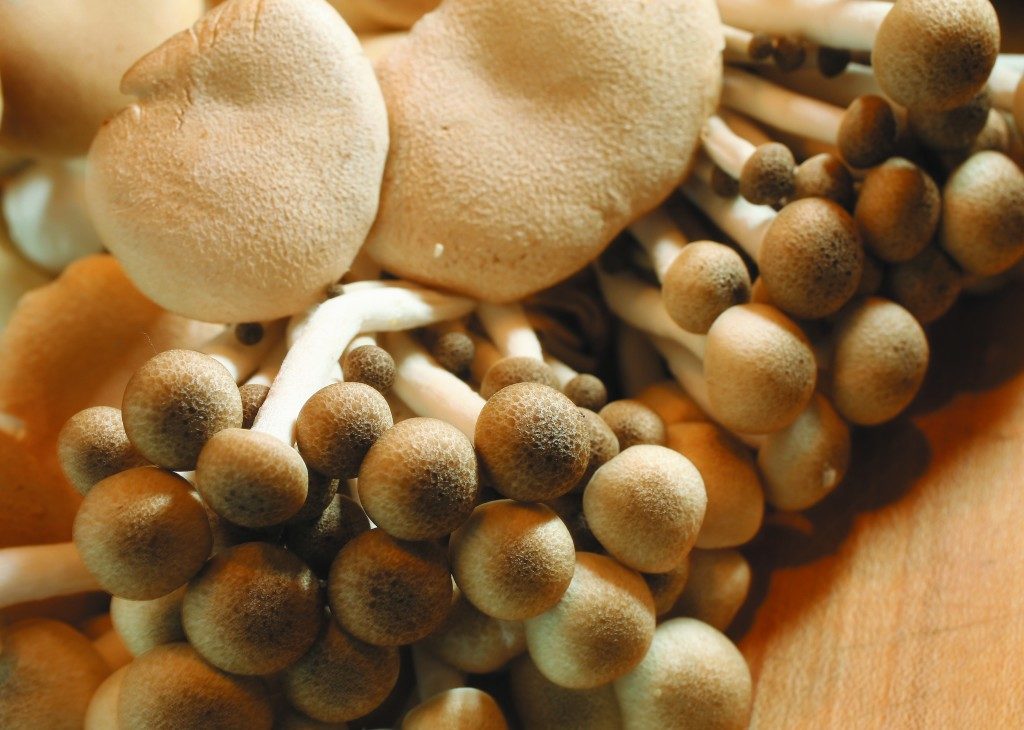Local Dungeness crab may be unavailable for much of the winter, yet if the predicted El Niño rains materialize, Sonomans will soon be able to comfort themselves with another regional delicacy: wild mushrooms.
Although Sonoma’s mushroom-hunting season got off to a slow start, with fall forays delayed until late November, 2016 could turn out to be the best year for fungi fanatics since California’s drought began four years ago. Not only do experts predict much-needed precipitation in January and February, they anticipate warmer-than-normal temperatures — ideal conditions for mushroom growth.
“In the rest of the country, like the Midwest and the Northeast, they get a lot of their rain in the spring and summer, and then it’s too cold for mushrooms,” said Patrick Hamilton, founder of Patrick’s Wild Mushroom Adventures in Cotati. Northern California perciptation comes at just the right time for fungi formation.
Mushrooms typically start popping up throughout the county about a week to 10 days after the first good soaking, Hamilton said, and can keep growing for months.
“We can pick mushrooms all the way through May, as long as it keeps raining,” he said.
Along with leading forays for his own company, Hamilton coordinates monthly mushroom hunts for the Sonoma County Mycological Association (SOMA), a volunteer group specializing in mushroom education. Forays are held at Salt Point State Park near Jenner, and on private properties. The park was closed to mushroom foraging in October 2015, due to severe drought conditions, but activities resumed in November with the fall rains. “At Salt Point, you’re allowed to pick 5 pounds of mushrooms per day if you’re a private collector,” Hamilton said.
For those in search of wild mushrooms, it helps to know where the different varieties grow, and under which trees.
“The most sought-after mushroom in Sonoma County is the porcini,” Hamilton explained. “It grows in our bishop pine forests, from the coastline to about 10 miles inland. We also have black and golden chanterelles, which can be found in a live oak or pine forest. The black ones grow with tanbark oak.” Morels also pop up in Sonoma, although finding them depends largely on happenstance. A walk through a backyard might reward with a morel growing by a tool shed. The species also favors neglected apple orchards.
“That’s where I’d go looking in the early spring, if I wanted to find morels in Sonoma,” Hamilton said.
For those new to mushroom hunting, Hamilton strongly advised going with a knowledgeable person or group. That’s because in addition to providing fertile ground for earthy, savory chanterelles, black trumpets and king boletes, Sonoma is also home to the poisonous destroying angel and death cap mushrooms, which are sometimes mistaken by amateurs for edible varieties and can cause death when ingested.
SOMA leads free monthly forays at Salt Point through spring; just show up at the designated spot and bring a potluck dish to share. At a typical hunt, participants break into small groups, each led by a SOMA guide, and spend about an hour collecting mushrooms. The groups then reconvene to identify and photograph the unearthed treasures, and the edibles are cooked as part of a post-foray picnic.
In addition, SOMA hosts an annual wild mushroom camp during the Martin Luther King Jr. holiday weekend (this year, Jan. 16-18), which includes forays, cooking classes and fabric-dyeing workshops.
For smaller groups interested in more in-depth knowledge, private forays can be arranged through Patrick’s Wild Mushroom Adventures. “I teach much more intensely on the private forays,” Hamilton said, “about the geology, the trees and the weather.”
Another company, Wild About Mushrooms, leads Sonoma Coast forays through February, geared for beginner and intermediate-level fungi lovers.
“Our events involve an exploratory walk in the mushroom-rich woods, followed by a cook-up of the edibles we find and a potluck picnic,” founder David Campbell said. “We basically conduct educational parties in the woods, playing with our beloved mushrooms.”
Enthusiasts who want to know more about what they can do with their mushroom bounty can join Relish Culinary Adventures in Healdsburg for its annual series of forays and demonstration lunches. “We have a few foraging locations that are within 35 minutes of downtown,” Relish owner Donna del Rey said. “One is in the hills above Alexander Valley and the other is high above Lake Sonoma in the Rockpile winegrowing area.”
Elissa Rubin-Mahon, who leads the Relish excursions, said mushroom hunting on private property has its advantages.
“Taking people to forage in places they can come back to encourages them to harvest from the same areas,” she said. Fewer people returning to the same spot means more mushrooms for collectors to discover.
An experienced forager and chef, Rubin-Mahon helps Relish foray participants “get their mushroom eyes on” before fanning out over the landscape to collect fungi.
After an hour or so in the woods, foragers meet back at the Relish Culinary Center for a cooking demonstration and four-course lunch.
Those who prefer to go it alone can still get expert guidance: SOMA volunteers can help identify mushroom specimens through online photos, and in person at the group’s monthly meetings, held at the Sonoma County Farm Bureau in Santa Rosa.
Of course, successful mushroom foraging is dependent on one very important element: rain. Moderate rainfall in November and early December had foragers optimistic about January and February.
“Ostensibly, El Niño means a wet year, and that bodes well for the mushrooms,” Campbell said. “Each year is a lesson,” added Rubin-Mahon. “Long-term drought has weakened the entire ecosystem, and tooheavy rain can be damaging. That said, the moisture will bring mushrooms.”










